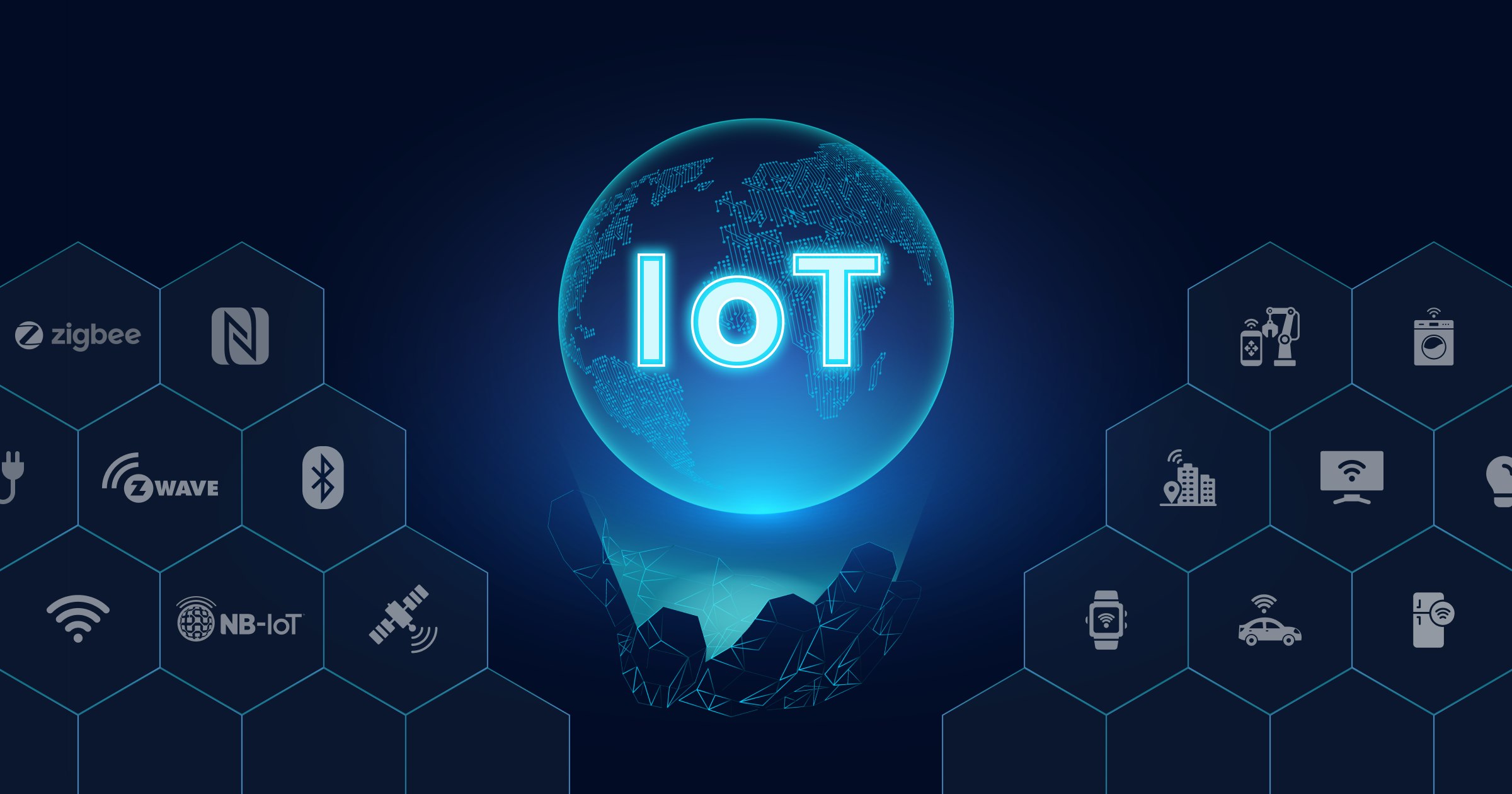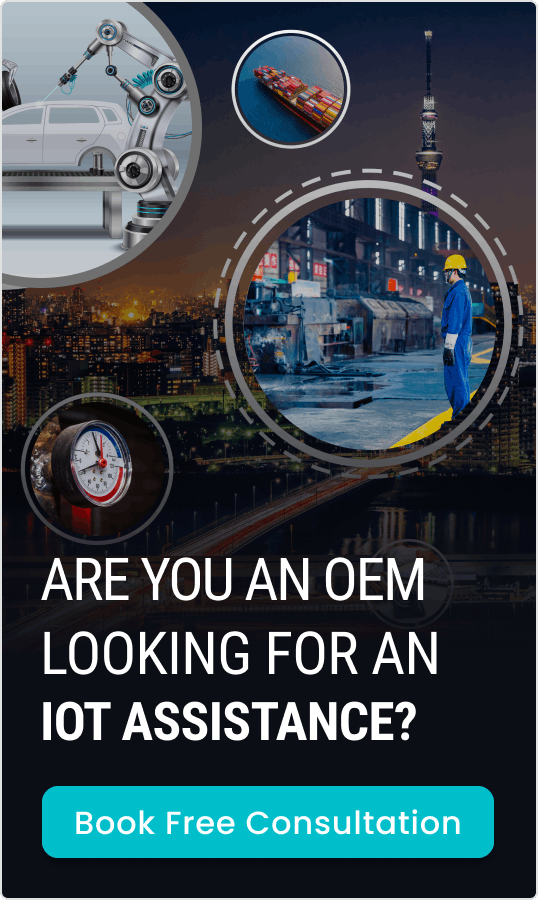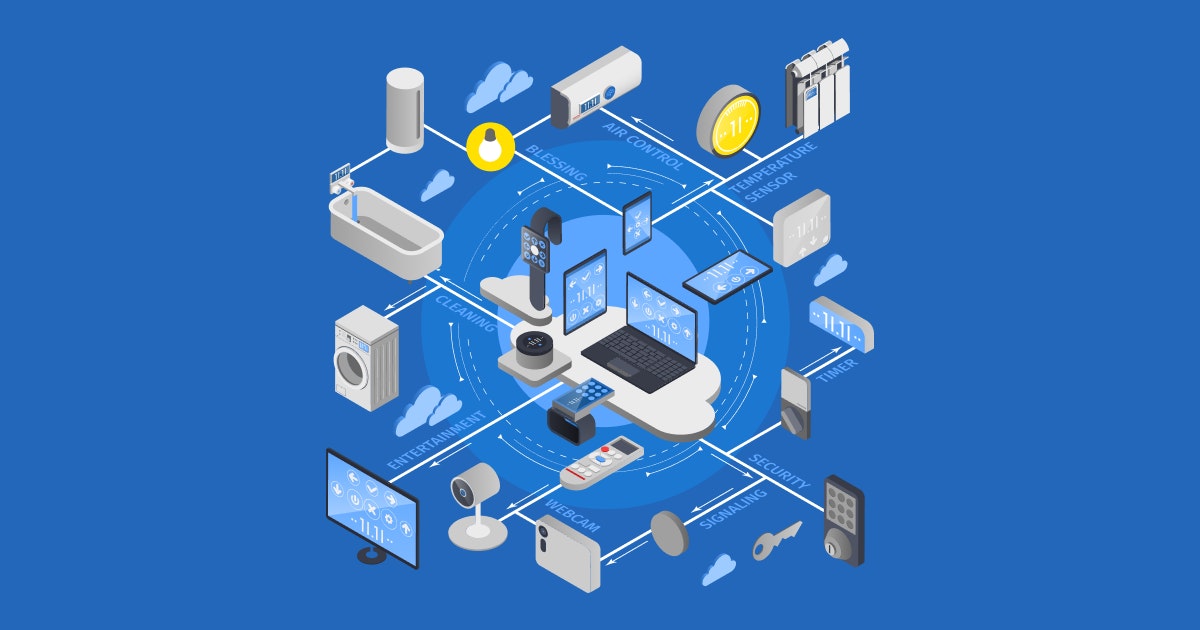Table of Content
In a world with digital connections and seamless information sharing, the proper devices and networks are of utmost importance. The Internet of Things (IoT) is one of the technologies employed to build a network of different digital devices and connections.
In this network, we will find a wide array of devices, each with its functionality and purpose connected to other devices. This IoT network has the potential to transform how we communicate, run businesses, and live a modern life. Let’s explore the seamless interconnection provided by IoT and its important aspects.
Understanding IoT Device Connectivity
Different types of IoT devices come together to form communication channels, leading to seamless connectivity. Enabling communication between other IoT devices becomes the backbone of all IoT systems. These connection channels allow IoT devices to share information and coordinate actions. As a result, they are able to make real-time and proactive decisions subject to the existing circumstances.
The seamlessness of this communication enhances efficiency, scalability of the IoT network, and the scope of automation. We must also consider the environment before establishing the connection, as the network setup may change according to the ecosystem.
When communication is established with the right principles, it can enhance user experience and foster active relationships and better decision-making.
Need Help with IoT Device Integration?
Contact Us NowTypes of IoT Device Connectivity:
- Wired: Wired connections provide high-speed and stable connections over the Ethernet and LAN networks. They are suitable for industrial settings where connection reliability is pivotal to performance.
- Wireless: These include Wi-Fi and cellular networks, which have a short, medium, and long range. Wireless connections are widely popular in IoT networks and help build smart homes and smart factories.
- LPWAN: Low-power wide-area Networks are used in environments where long-range wireless and reliable connectivity is required but in a low-power configuration. It is suitable for areas like environmental monitoring and asset tracking.
- Satellite: Satellite IoT connections are meant to build communication channels requiring global coverage. This type of connectivity is required for communication in isolated locations and maritime applications.
- Bluetooth: Bluetooth connectivity is widespread in short-range communication. It can successfully connect different IoT devices, smart home gadgets, etc.
- Zigbee: Another communication channel of low-power configuration, Zigbee connectivity is ideal for IoT devices over a mesh network. It is used in smart homes and factories while offering energy efficiency and reliable connectivity.
- Z-Wave: The Z-Wave connection is also meant to establish seamless connectivity in a home automation system over a secure wireless protocol.
- NFC: Near-field communication powers IoT devices in a close range and allows secure data exchange between them. It is mainly used for contactless payments and access control systems for IoT applications.
- NB-IoT: Narrowband IoT is a connectivity solution within the LPWA technology that enables communication between different IoT devices. It is used for lower power consumption and higher system capacity along with spectrum efficiency.
While choosing the IoT connection devices and network for communication, we need to consider different factors. These include:
- Range: What’s the range of the connection solution? Depending on your requirements, will it be able to enable communication between all the devices at a reliable rate without lagging, disconnection, and discrepancies?
- Data Rate: Know the data throughput of the connectivity solution. Where wired connections have a data rate of 10 Gbps, the same for wireless connections differs according to 2.4GHz to 5 GHz bands. Cellular network speed can go up to 5 Gbps, and Bluetooth connections can go up to 2 Mbps. So, choose the connection type according to your requirements.
- Power Consumption: Check the power consumption of the IoT devices. Devices with higher power consumption can increase the operational costs.
- Cost: Consider the cost of setting up the entire network, including hardware and software expenses. Also, include the costs to run, maintain, and repair the devices.
- Latency: Latency rates refer to the delay between data transmission. Where wired connections and Bluetooth have the lowest latency, LPWAN systems have the highest latency.
In this, we must also consider the differences in different types of IoT connections;
1. Consumer Connected Devices
This includes smart home gadgets and devices like smart speakers, automated security systems, voice assistants, wearables, fitness trackers, connected appliances, etc.
2. Enterprise Connected Devices
They power up large-area establishments to build smart factories and warehouses, among others. We can include devices like smart security systems, energy management, asset and inventory tracking, mobility solutions, and much more.
3. Industrial IoT
IIoT devices are installed in large-scale industrial settings and provide benefits like predictive maintenance, real-time monitoring, automation, etc Using these systems, industries benefit from higher productivity, reduced downtime, and higher efficiency through data-driven insights.
Wired Connectivity
Wired connectivity includes connections enabled through high-capacity and high-speed wired networks. Ethernet is one of the best examples of wired connections, and it has some vital advantages for building IoT device connections.
With Ethernet, we can have different configurations of connections, giving speeds between 10 Mbps to 10 Gbps. One of the biggest benefits of Ethernet is high data throughput, which is required in industrial settings and high-capacity workstations. However, there are some limitations, like a wire is required to establish a connection with each device on the network. This limits mobility and presents several maintenance and operational challenges.
A few areas of use include Smart Grids, healthcare, transportation, industrial automation, security systems, and smart buildings.
Wireless Connectivity
Wireless connections, as the name suggests, work without wiring the devices to establish a connection. They utilize the Radio Frequency (RF) technology linked with the radio wave propagation system of the electromagnetic spectrum. Using this type of connectivity spread over the open space, the wireless device in an IoT network connects and works together.
Some of the most popular wireless technologies include;
Cellular Network
Cellular has become the most popular network connection system today, and the same applies to IoT networks. Establishing IoT connections with this system is easier with an already existing global cellular network. Different types of cellular networks are available, including;
- 2G: Second generation network, which brought digital voice communication and SMS capabilities sent with limited data. It’s widely used for asset tracking in IoT.
- 3G: With improved data speed, the third-generation network provides remote monitoring while helping establish connections with complex devices and applications easily.
- 4G: Fourth generation cellular network is enabled with high speeds, allowing us to build IoT-enabled smart cities and autonomous connected vehicles.
- 5G: The ultra-high speed and low latency fifth-generation network provides capabilities like real-time remote control and autonomous device operations.
- LTE-M: The LTE-Machine network is a low-power connectivity system available for wide area networks and can be used in IoT for its extended coverage. It also provides higher battery life.
- NB-IoT: The Narrowband IoT network offers impressive indoor connectivity while offering a low power consumption solution. It’s great for agricultural IoT and smart meters.
A cellular network offers simplicity of installation and maintenance. But it does come with some challenges, like the provider’s agreement and terms of use, which can limit your capabilities. Hence, this system is not ideal for IoT connections in manufacturing and financial services.
Plus, there are cost challenges associated with this connection type, along with the need for higher power consumption.
LPWAN (Low-Power Wide-Area Network)
LPWAN is a subset of the wireless communication systems and technologies specifically designed to build IoT networks. These connections provide communication channels for long-range coverage with benefits like low power consumption and cost efficiency.
Hence, LPWAN is ideal for battery power IoT connections, particularly in smart cities, agricultural settings, and environment monitoring. Different types of connections in LPWAN include:
1. LoRaWAN: LoRaWAN is ideal for establishing long-range IoT connections. Offering smart connectivity in agricultural settings and intelligent cities, LoRaWAN is a cost-efficient solution. However, entities using this network must set up their own infrastructure. Since this connection uses an unlicensed frequency, the businesses only have to pay for the infrastructure.
2. Sigfox: Sigfox is also specifically designed for to provide connectivity for low-power objects in a wireless environment. It is popularly used in intelligent meter networks. Currently, Sigfox has a 900 MHz band network in over 72 countries. Using this technology, businesses can get a data rate of 100 bits per second.
3. Enhance indoor coverage for a robust IoT network. It enhances energy efficiency by consuming low power of the user devices and systems capacity. We can consider NB-IoT as a good alternative to a lower bandwidth cellular network.
4. LTE-M: The LTE-M is the cellular network optimized for IoT applications and brings benefits like reliable and low-latency connectivity. Such features are generally good for operations like fleet management and remote monitoring.
Satellite Connectivity
Satellite IoT connections are an excellent option for establishing connectivity in remote and inaccessible locations. It can provide a great solution when other types of wired and wireless connections are not available. With benefits like seamless connectivity and ubiquitous reach, satellite connectivity is crucial for maritime applications, aviation tracking, and remotely accessible environmental monitoring.
One of the limitations of satellite connectivity is the high installation and operations costs. Moreover, it has a higher latency rate, which can make real-time decision-making difficult. Some of the industries where satellite connectivity works efficiently include;
- Offshore energy operations
- Agricultural work in remote areas
- Disaster management services
- Shipping and logistics
For these areas, a satellite IoT connection helps with quick decision-making by enabling data transmission.
Security and Privacy Considerations
The interconnection of all the devices in an IoT network does raise security and privacy concerns. While there are several solutions to combat these challenges, we must leave room for unfriendly elements to take advantage of the weak security system.
- Authentication and Authorization: Secure IoT networks have authentication systems like digital certificates and secure APIs. These are used to identify devices and allow authorized devices to tap into the network. The authorization system controls the access level and actions of the devices.
- Data Encryption: Using the TSL/SSL encryption protocols, data in storage and in transmission is secured. This prevents eavesdropping attacks, data tampering, and data leakage. Hence, this maintains the data privacy and integrity.
- Quantum Encryption: Quantum-safe encryption is utilized in IoT connections to fill the security gaps that may arise due to quantum computing. There are quantum algorithms to secure the IoT network from attacks coming from quantum computing systems.
- Firmware Updates: To protect the firmware and enhance its security, secure Over-The-Air (OTA) updates are sent to protect the network from different vulnerabilities. With cryptographic signatures superimposed on the web, we can set up a system to verify the authenticity and security of the updates.
- DDoS Mitigation: Secure IoT networks have DDoS mitigation systems like traffic analysis, rate limiting, and anomaly detection.
With these security systems, we can maintain the integrity and security of the IoT network. A secure network is crucial for the protection of data, devices, and users connected to the network.
Enterprise-Class Top IoT Development Company
Explore the servicesInteroperability and Standards
Every IoT network is governed by some communication protocols and standards. These standards are set to optimize the utility, security, and integrity of the entire network. Here are the main IoT standards used;
1. MQTT: The Message Queuing Telemetry Transport is a publish-subscribe protocol that is popularly used in networks characterized by low bandwidth and high latency. With a real-time data transmission function, the MQTT protocol is employed in an IoT network with limited resources.
2. CoAP: Constrained Application Protocol is also specifically designed for a limited resource network. This protocol employs HTTP to connect the network with web services.
3. HTTP: The Hypertext Transfer Protocol is widely used for IoT device connectivity. This is because HTTP is a globally recognized and implemented protocol providing robust and standardized communication channels between different IoT devices.
4. DDS: The Data Distribution Service protocol is another one of the publish-subscribe standards but with a data-centric architecture. It provides real-time IoT device communication, creating a channel boasting high speed, reliability, easy scalability, and low latency. We can deploy these standard IoT systems like autonomous vehicles.
Using these standards, a well-oiled IoT network can be built, run, and managed while offering guaranteed benefits to the end users.
Future Trends in IoT Device Connectivity
The future of IoT is bright and shining as we are expecting several new technologies to augment its capabilities. We can build a more robust, secure, and efficient IoT network with a higher scope and better potential using these new technologies. Let’s take a look at the new technologies powering the future of robust IoT device connectivity.
1. 5G Integration
5G will offer ultra-high speeds to the IoT connections, making high-speed data transmission easier. It will further enable real-time decision-making with data sent through a cellular network. As a result, we can expect to have IoT connections in remote areas at higher efficiency.
2. Edge Computing
Edge computing will be helpful in reducing latency and enhancing data processing speeds. It will allow data closer to the IoT devices to process easily and improve IoT connectivity in industrial automation and augmented-reality applications.
3. AI and Machine Learning
AI can give us better insights to power up IoT device communication. As AI can analyze large amounts of data sets with speed, it can enhance the IoT network capacity and processing efficiency. As a result, we can build more innovative IoT networks across all industries.
The Ultimate Guide to IoT Device Management in 2024
ExploreConclusion
With the IoT technology growing rapidly, we can expect to see more smart homes, smart cities, and smart industries shortly. But with the emergence of advanced technologies, an IoT network will gain more capabilities, beneficial to everyone, as long as we can address the operational and security challenges.
At Intuz, we build IoT applications to help you run the IoT network. Get in touch with us to know more about how we can help you establish a robust IoT device communication network.






